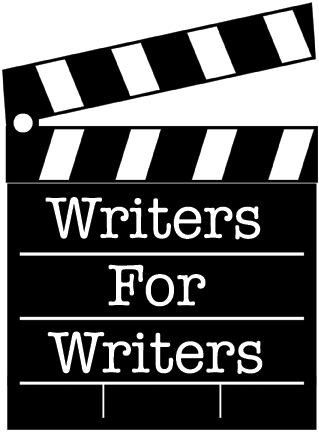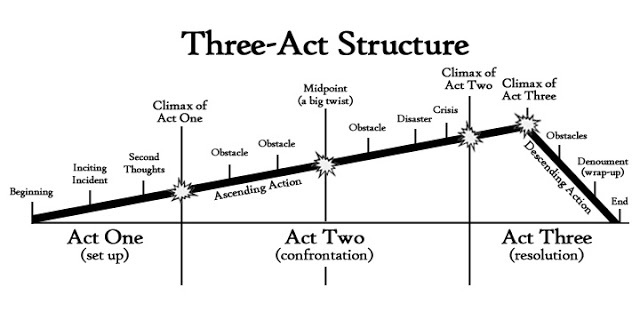This week Writers For Writers will begin a discussion of structure for new screenwriters, highlighting several popular methods and providing links for more information/further research into these ideas. It is important to note that not every method may make full sense/work best for your story/your understanding of structure, however, it is important to understand story structure as you begin crafting and creating your screenplay.
Three Act Structure – The three act story structure is the most basic and most commonly referred to and referenced element of story structure. It is as follows:
Act I: Setup
Act II: Confrontation
Act III: Resolution
It may also help to understand the three-act structure as:
Act 1: Beginning
Act 2: Middle
Act 3: End
Let it be noted that many view beginning, middle and end as an incorrect way to look at structure because each act must have rising and evolving stakes, action and characters. This is only listed to help readers begin to understand their story and how to dissect and categorize their work into acts.
Here is a quick discussion of each act:
Act 1 – Needs a hook – something to draw the reader/viewer into the world that you have created. Introduces the major characters that will be involved in your story as well as the world that this story takes place in. Needs to establish a general set of rules for the world (for example, if your script takes place on another planet, what are the rules for this planet? Can everyone fly? Can they all breathe the air? Etc.)
Something very important about the rules for your world is that you must stay consistent with them at all times in your story. For example, if your hero can fly, then your hero should be able to always fly (or should be able to fly under very specific circumstances that you create) not simply when the plot needs them to be able to fly.
Act 1 must also have an inciting incident in which the protagonist has his/her world changed to encourage them/force them to go on their journey.
Act 2 – This is the longest act and Blake Snyder calls a large part of it the “Promise of the Premise”. You must keep the story moving/racing to the end. If your story is about a theme park with dinosaurs, this is where you show the dinosaurs/give us what we paid for when we came to the movie: dino action!
This can be done by introducing subplots, extra characters or confrontations. The stakes must escalate to keep the reader/viewer interested in your story and in the journey you are taking them on.
Act 2 must have some incident that happens to the protagonist to fling your story into Act 3 and to the conclusion. Often, this is when it seems as if the villain has won, the hero is hopeless and/or the goal will never be achieved.
Act 3 – The final confrontation. A showdown with the villain. The clash between good and evil. This is where all of your set-up pays off. Where you tie up loose ends, resolve subplots and leave your audience with a final message/feeling as they exit the theater. It is usually the shortest and most exciting act and will typically have the most action.
Though this may sound very basic, many screenwriters struggle to fully realize the three acts in their story. For instance, a writer/story might have a strong beginning and a great hook and end their screenplay with a bang, but the middle might drag because the writer is simply waiting to get to his/her big finale. Many young writers have their scripts passed on because of a slow or wandering Act 2, so don’t let this happen to you!
For more information about the 3 Act Structure, check out this site: http://www.elementsofcinema.com/screenwriting/three-act-structure/
You can also find other information here: https://thescriptlab.com/category/screenwriting/structure/three-acts/


Recent Comments